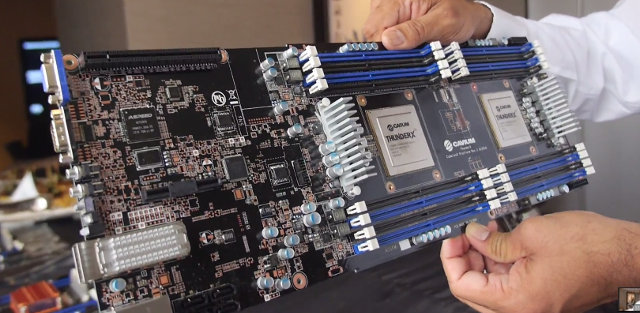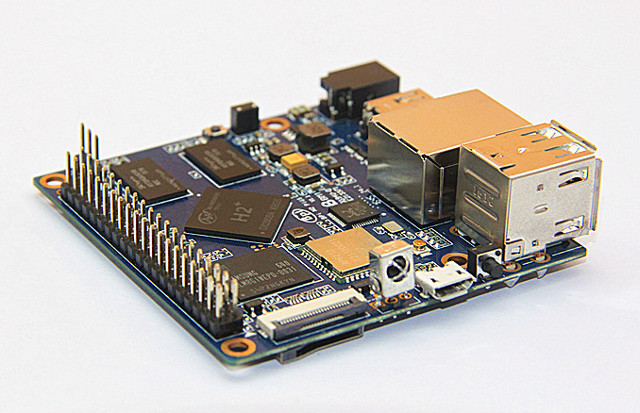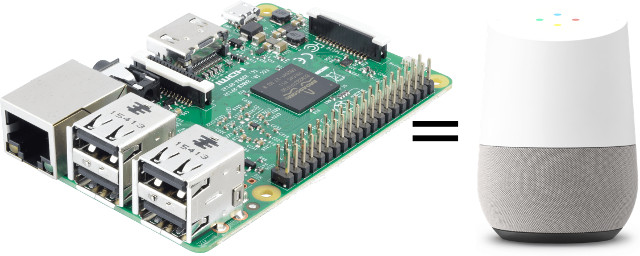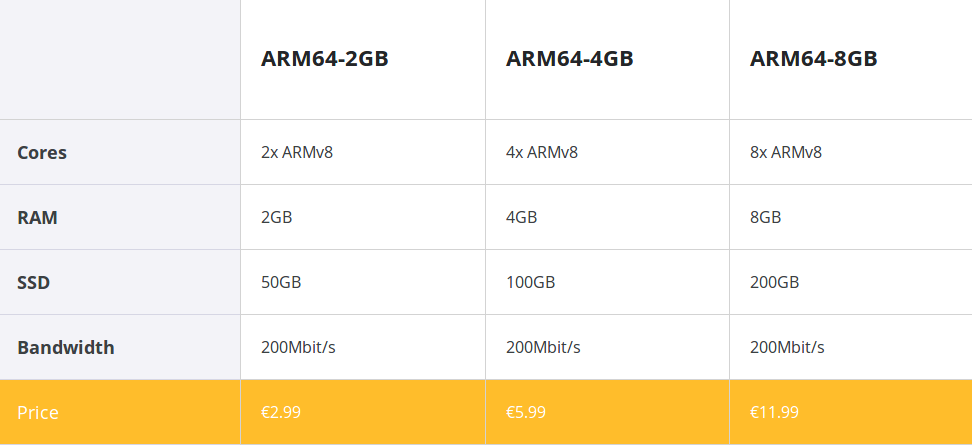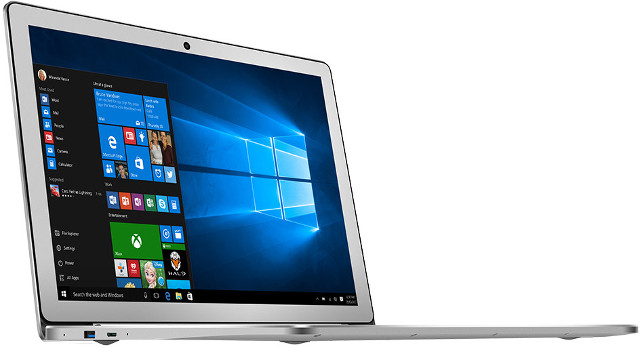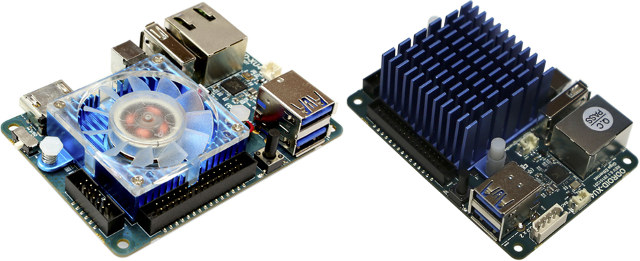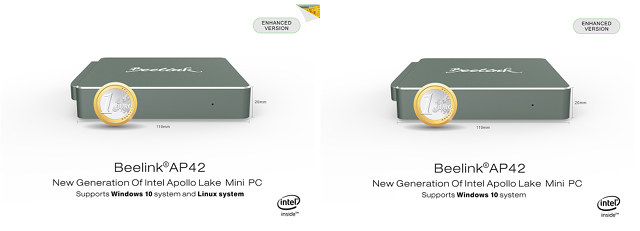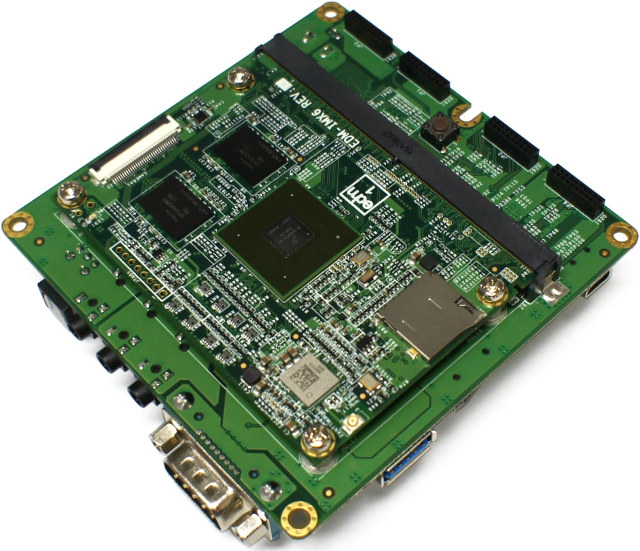Last week, I wrote about Scaleway ARMV8 cloud servers powered by Cavium ThunderX processors. They are very cheap, as low as 0.0006 Euros per hour or 2.99 Euros per month, but you only get access to 2 to 8 cores, so obviously you don’t get a baremetal server for that price. If you want the latter Packet.net has been offering just that since the end of last year with their Type 2A baremetal server with two Cavium ThunderX 48-core processors, 128 GB RAM, 384 GB SSD and 20 Gbps bandwidth. The servers can currently run Centos 7, CoreOS, Ubuntu 16.04 LTS, with support for container platforms such as CoreOS Tectonic, Rancher, Docker Cloud, ContainerShip, StackEngine, Docker Machine, etc… You can check the status for other operating systems and features and the roadmap page. They also have x86 servers, and I’ve included the hourly and monthly prices and features for all […]
SinoVoIP Releases $35 Banana Pi BPI-M2+ Board with Allwinner H2+ Processor
Banana Pi BPI M2+ board was first released with Allwinner H3 processor, but the same PCB can also be used with Allwinner H2+ and H5 processors since the processors are pin-to-pin compatible, and SinoVoIP intends to release three version of the board, and just launched BPI M2+ (aka BPI H2+) with Allwinner H2+ processor for $34.50 + shipping, $1.5 cheaper than the H3 version also listed on Aliexpress. If you shop around, and don’t order on the official SinoVoIP store, you may find cheaper price for the boards. As expected, the specifications have not changed apart from the processor: SoC – Allwinner H2+ quad core Cortex A7 @ 1.2 GHz with an ARM Mali-400MP2 GPU up to 600 MHz System Memory – 1GB DDR3 Storage – 8GB eMMC flash, micro SD card slot up to 64GB, Video & Audio Output – HDMI with CEC support Connectivity – Gigabit Ethernet, 802.11 […]
Google Assistant SDK Turns Your Raspberry Pi 3 into Google Home
Google Home allows you to select music, control your home automation system and more with voice commands, but now you can do the same with a Raspberry Pi 3 as Google released a developer preview (alpha v1) of the Google Assistant API that works on Raspberry Pi 3, and other development boards running Debian or Ubuntu. Functionalities are limited right now, with RPC API and Python sample code, but it only works with English language, and features such as timers & alarm, playing music, news, or podcasts, and precise location are not supported. Location is determined using your IP address only, and if you’re using some third party services / products such as Uber or Hue, you’ll need an actual Google Home device for initial setup. Google has provided instructions to use Google Assistant SDK with Raspberry Pi 3 board. First you’ll need a USB microphone ($5.99 on Amazon), and […]
Cavium ThunderX based Scaleway ARMv8 Cloud Servers Go for 2.99 Euros per Month and Up
Scaleway launched 32-bit ARM server hosting services in 2015 for 10 Euros per month, before dropping the price to 2.99 Euros per month half-year later, and now the company has just launched a new offering with 64-bit ARM servers powered by Cavium ThunderX processor going for 2.99 to 11.99 Euros per month depending on configuration. The processors are equipped with DDR4 ECC memory, and all three services included unlimited transfer, so you don’t need to pay for any bandwidth fee. While the price is shown per month, you’ll be billed by the hour (0.006 Euro/h for ARM64-2GB), so if you are using those for development it may even cost less per month, as you can turn them off when not working. All server are located in a Paris data center in France, and runs Ubuntu 16.04, but more operating systems and “InstantApps” will be added to the selection. More servers […]
CHUWI Lapbook 12.3 is a Windows 10 / Ubuntu Apollo Lake Laptop with a 2K Display, 6GB RAM, Up to 256 GB SSD Storage
I’ve reviewed CHUWI LapBook 14.1 laptop earlier this year with an Intel Celeron N3450 Apollo Lake processor, 14.1″ Full HD display and 4GB RAM, and found it to work reasonably well for the price in Windows 10, as well as Ubuntu 17.04. The company has been working on another model called CHUWI LapBook 12.3 with the same processor, but a smaller yet higher resolution 12.3″ 2K display, more memory (6GB RAM), 64GB eMMC flash, and support for M.2 SSDs up to 256 GB. CHUWI LapBook 12.3 specifications with highlight in bold showing differences against LapBook 14.1 model: SoC – Intel Celeron N3450 quad core “Apollo Lake” processor @ 1.1 GHz / 2.2 GHz (Burst frequency) and 12 EU Intel HD graphics 500 @ 200 MHz / 700 MHz (Burst freq.); 6W TDP System Memory – 6GB DDR3 Storage – 64 GB eMMC flash + micro SD slot up to 128 […]
Hardkernel ODROID-XU4Q is a Fanless Version of ODROID-XU4 Exynos 5422 Development Board
[Update May 2018: You may be interested in ODROID-XU4Q review with Ubuntu 18.04] We had already seen ODROID-XU4 development board price drop to $59 earlier this year, but a frequent complain about the board remained: it requires a fan to operate at full speed, and makes noise while the fan turns. To address this issue, the company has now launched ODROID-XU4Q board with exactly the same specifications with Samsung Exynos 5422 octa-core processor, 2GB RAM, eMMC module support, Gigabit Ethernet, USB 3.0, HDMI 1.4 etc…, except the fan is replaced by a large heatsink. The company has also thoroughly tested both versions in different configurations such as setting the maximum frequency to 1.8 or 2.0 GHz, and found ODROID-XU4Q to be slightly slower under high load due to CPU throttling, as the large heatsink does not cool quite as well as the smaller heatsink in combination with a fan. However […]
Beelink AP42 Apollo Lake mini PC Linux Review with Ubuntu, KDE Neon, Elementary OS….
Beelink’s latest Intel mini PC offerings includes the AP34 and AP42 which are their first models using Intel Apollo Lake processors. The former uses an Intel Apollo Lake Celeron N3450 processor (burst frequency 2.2GHz, Intel HD Graphics 500 with Graphics Burst Frequency 700MHz and 12 Execution Units) while the latter uses the slightly more powerful Pentium N4200 (burst frequency 2.5GHz, Intel HD Graphics 505 with Graphics Burst Frequency 750MHz and 18 Execution Units). Both support Windows 10 (Home) and Beelink’s marketing claim they “support Linux system”. GearBest has given me the chance to review running Linux on the AP42 model so here are my findings. Normally I first make a disk image before booting Windows or installing Linux. However initial attempts at booting a Live USB with a variety of Linux systems failed so both the reseller and manufacturer were contacted for comment. Interestingly there was no immediate reply but early […]
Wandboard QuadPLUS Development Board Gets i.MX 6QuadPlus Processor, 802.11ac WiFi and Bluetooth 4.1
The first Wandboard development boards launched in 2012 nearly 5 years ago based on Freescale i.MX6 Solo and Dual processor, with Wandboard Quad launched a few months later. The boards were fairly popular at the time due to their better specifications, and especially Freescale’s much better documentation and software compared to the competition such as Broadcom (Raspberry Pi) and Allwinner (Cubieboard). Since the boards are based on TechNexion EDM system-on-modules they could also be used by companies working on their own products based on the system-on-module. It’s also a good platform if you want to test various version of Android, because the company released Jelly Bean, Kitkat, Lollipop, and Marshmallow images for the boards, and I’m expecting a Lollipop version soon. However, albeit the company worked on other NXP boards such as PICO-IM6UL Android Things, there had not been any hardware upgrade for Wandboard for nearly 4 years, but last […]


